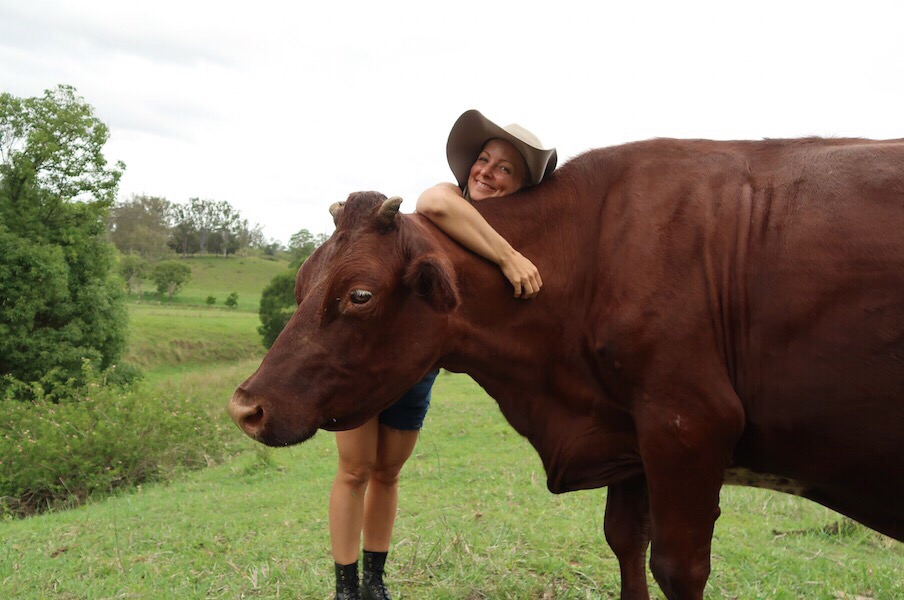Hi Wild Ones!
I’ve written before about the “paleolithic diet” philosophy and why it’s so misguided. And I’ve written about the extraordinarily high-fibre content of our great ape predecessors’ diet.
I have more to say because there’s more information about evolution and diet, and I think it might interest you.
A recent scientific review has argued in favor of the plant-based diet, citing the massive amounts of whole plant foods that humans ate throughout their evolution.
Come time travel with me for a moment…
It’s around 200,000 BCE. Humans are living on foraged wild greens and the occasional wild animal. Their diet provides them with more nutrition than you could even imagine. In a day, they consume over 100 grams of fibre (most Westerners get less than twenty nowadays), 600 milligrams of vitamin C (that’s the equivalent of nearly a dozen oranges), and plenty of calcium and vitamin E.
Obesity? That didn’t exist.
Processed, greasy, refined, and sugar-filled non-foods? Nope. None of that, either.
Based on those numbers, you would think the Paleo diet was onto something, hey? And when paleo advocates speak out against refined foods, they are on the right track! But then they go wrong…
Modern-day “paleo” dieters are often filling up on modern meat, which looks nothing (nutritionally speaking) like the prehistoric animals our paleolithic ancestors would have eaten. To begin with, it’s loaded with contaminants (according to a recent review in the Journal of the American Meat Science Association) like mercury, lead, arsenic, preservatives, and antibiotics.
It is impossible to follow a modern paleo diet without running huge risks from high consumption of mercury.
What’s more, modern paleo dieters often forget about that other part of our ancestors’ diet: the plants.
The real paleolithic diet had nothing to do with large portions of protein- and chemical-laden meat and fish.
No, wild heart. The real paleolithic diet was all about the plants. Whole, straight from the source, and packed with fibre.
And you know what? That’s the exact diet I recommend to you! Not only does this way of eating deliver all the nutrition our bodies need, it is also the ideal diet for healthy weight loss and maintenance.
Healthy, satisfying calories. Whole, unprocessed greens, fruits, nuts, seeds, and grains. Lots of fibre. Little protein.
It’s simple. It’s delicious. It’s yours. I’m here to support you along the way.
I’d love to hear from you, too. What benefits have you experienced from adding more whole plant foods into your diet so far? Does anyone you know follow the paleo diet? Share in the comments!
Xx
Donna
Note: The photo I have here with this article is of Mary and I last year. She died later that year at 22 years old. She was rescued by FAR (Farm Animal Rescue). She was my first and many others first ever cow cuddle. She mattered and she is missed deeply. The day she passed I happened to run into some people who volunteer at FAR, they were absolutely devastated at the loss.
R.I.P. Mary you angel.
References:
Andrée S, Jira W, Schwind KH, Wagner H, Schwägele F. Chemical safety of meat and meat products. Meat Sci. 2010 Sep;86(1):38-48.
Benzie IF. Evolution of dietary antioxidants. Comp Biochem Physiol A Mol Integr Physiol. 2003 Sep;136(1):113-26.
Jew S, AbuMweis SS, Jones PJ. Evolution of the human diet: linking our ancestral diet to modern functional foods as a means of chronic disease prevention. J Med Food. 2009 Oct;12(5):925-34.
Benzie IF, Wachtel-Galor S. Vegetarian diets and public health: biomarker and redox connections. Antioxid Redox Signal. 2010 Nov 15;13(10):1575-91.
Originally published at donnawild.com


